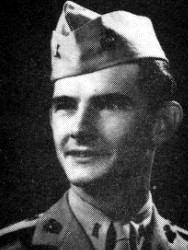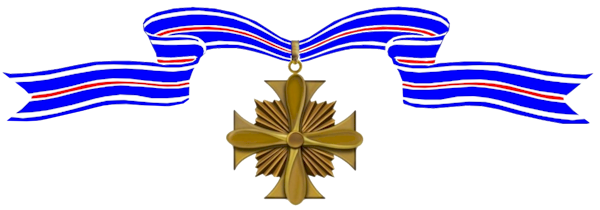William Brown finished World War II as a Marine Corps ACE with 7 aerial victories. He then flew combat again in Korea, earning a second Navy Cross before he was killed in action on February 24, 1952.

–
Awards Received
-

Navy Cross
-

Navy Cross
-
Navy Cross
Service:
United States Marine CorpsRank:
Second LieutenantBatallion:
Marine Fighting Squadron 311 (VMF-311)Regiment:
Marine Air Group 31 (MAG-31)Division:
4th Marine Aircraft WingAction Date:
May 4, 1945
SPOT AWARD, Fleet Marine Force Pacific: Serial 002608 (October 9, 1945)The President of the United States of America takes pleasure in presenting the Navy Cross to Second Lieutenant William Perry Brown, Jr. (MCSN: 0-32240), United States Marine Corps Reserve, for extraordinary heroism and distinguished service in the line of his profession as Pilot of a Fighter Plane in Marine Fighting Squadron THREE HUNDRED ELEVEN (VMF-311), Marine Air Group THIRTY-ONE (MAG-31), FOURTH Marine Aircraft Wing, in aerial combat against enemy Japanese forces off Okinawa, Ryukyu Islands, on 4 May 1945. Leading his division on a combat air patrol, Second Lieutenant Brown sighted a flight of eleven enemy planes. Immediately giving battle, he fought his plane gallantly to shoot down four of the hostile craft and, by his expert flight leadership, contributed materially to the success of his division in destroying the remaining eight Japanese planes. His superb airmanship, courage and devotion to duty were in keeping with the highest traditions of the United States Naval Service.
-
Navy Cross
Service:
United States Marine CorpsRank:
CaptainBatallion:
Marine Fighting Squadron 323 (VMF-323)Regiment:
12th Marine Aircraft GroupDivision:
1st Marine Aircraft WingAction Date:
February 24, 1952
Authority: Board of Awards: Serial 940 (November 26, 1952)The President of the United States of America takes pride in presenting a Gold Star in lieu of a Second Award of the Navy Cross (Posthumously) to Captain William Perry Brown, Jr. (MCSN: 0-32240), United States Marine Corps Reserve, for extraordinary heroism in connection with military operations against an armed enemy of the United Nations while serving as Pilot of a Plane temporarily attached to Marine Fighting Squadron THREE HUNDRED TWENTY-THREE (VMF-323), in action against enemy aggressor forces in the Republic of Korea on 24 February 1952. Volunteering to participate in an eight-plane strike against heavily defended rail and bridge installations along a main enemy supply route at Sariwon, Captain Brown fearlessly pressed home his attack in the face of an intense barrage of hostile anti-aircraft fire and scored a direct hit on a rail line with a 1,000-pound bomb. Spotting a convoy of enemy trucks entering a well-fortified supply center while he was recovering from his initial dive, he immediately launched a low-level strafing run on the objective despite damage to his plane from continuous hostile ground fire. Although his aircraft burst into flames, Captain Brown bravely continued to dive on the vehicles with his guns blazing until his plane crashed and exploded amid the convoy. His outstanding courage, superb airmanship and valiant devotion to duty in the face of overwhelming odds reflect the highest credit upon Captain Brown and the United States Naval Service. He gallantly gave his life for his country.


